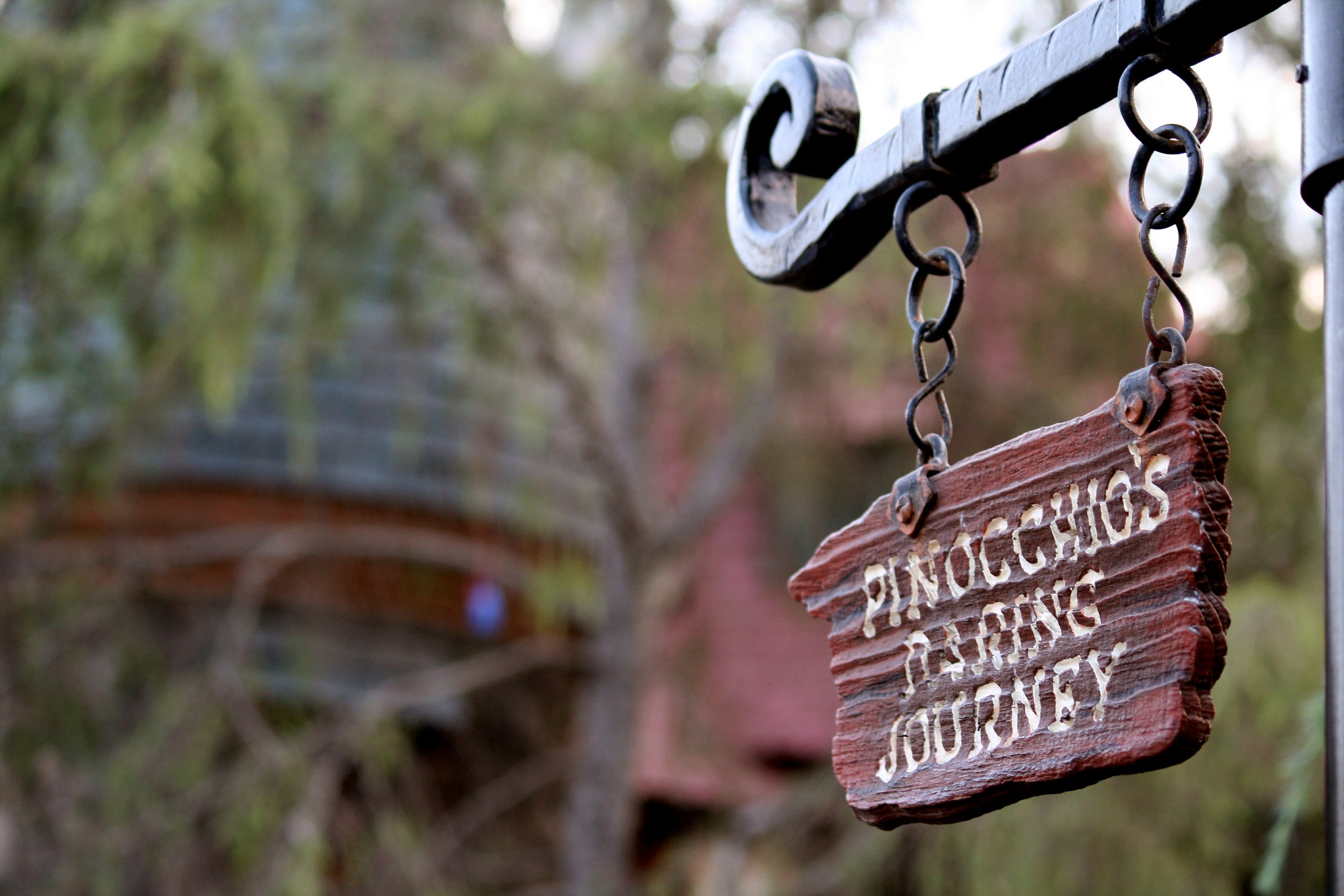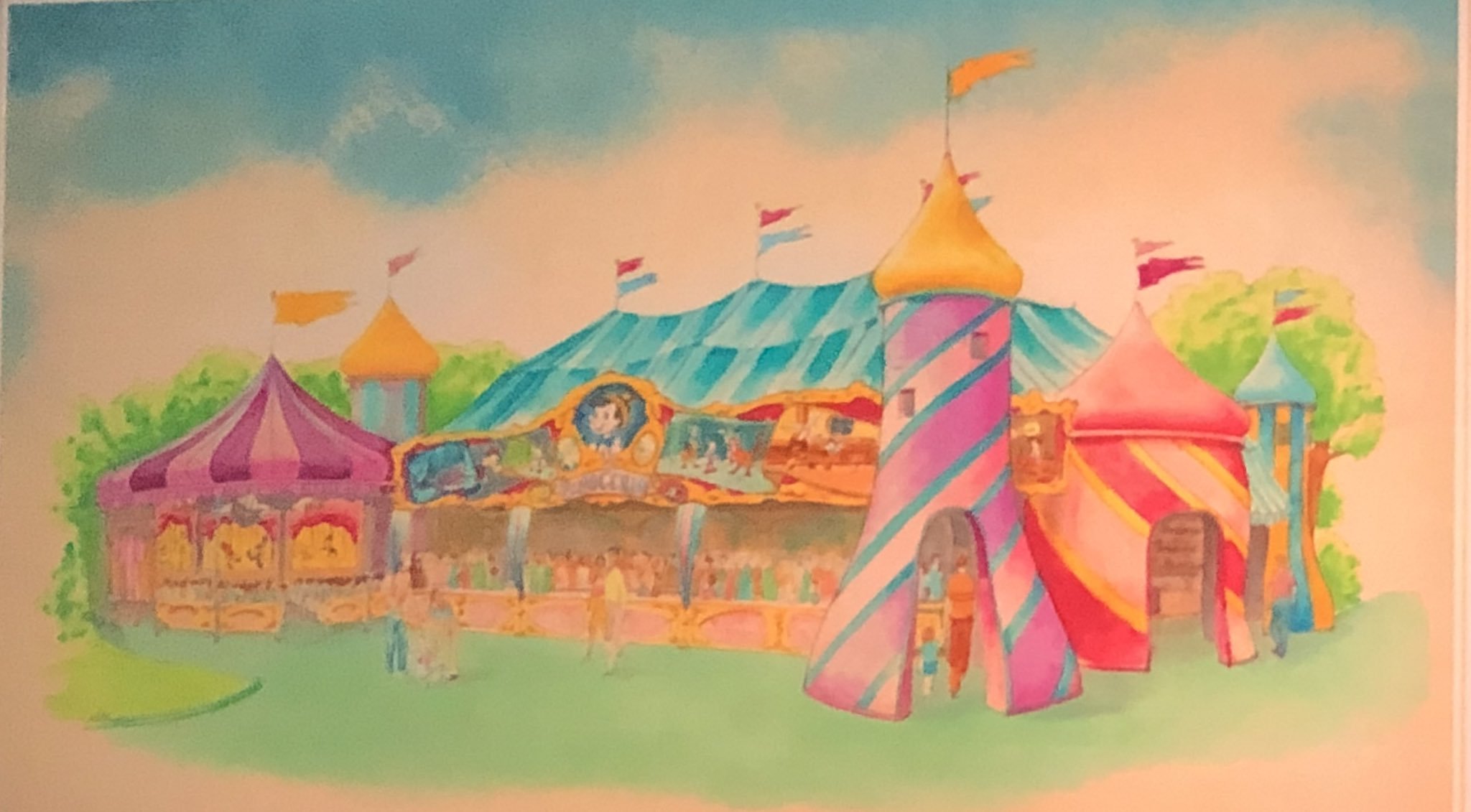The History of Pinocchio's Daring Journey
With the release of Disney’s live action Pinocchio this week, I thought it would be a good time to reflect on the history of Disneyland’s Pinocchio themed dark ride. The 1940 film has been highlighted many times in the past on this website, including The Impact of Jiminy Cricket on the Walt Disney Company, and with The World Premieres of the First Five Disney Films. I’ve also covered some of the other Fantasyland dark rides, including Alice in Wonderland, Peter Pan’s Flight, and Snow White’s Enchanted Wish. It is time for Pinocchio to take the spotlight!
Pinocchio’s Daring Journey sign. Photo taken by Andy Castro. Image from: https://www.flickr.com/photos/andycastro/2658414596/in/photolist-8zVuua-6Ajq4s-2ZuSQd-5vui54-53V53q-6uC1WS
The Early Days of Fantasyland
When Disneyland opened in 1955, it did not reach the scope of what the park is today by a landslide. Fantasyland featured just 9 attractions: Snow White and her Adventures, Canal Boats of the World, Mickey Mouse Club Circus, Mickey Mouse Club Theater, King Arthur Carousel, Mad Tea Party, Mr.Toad’s Wild Ride, Peter Pan’s Flight, and the Casey Jr. Circus Train. Dumbo’s Flying Elephants would be added a month into the park’s opening, and the Alice in Wonderland ride wouldn’t be added until 1958. Over all of this time, the essence of Fantasyland has remained the same, to immerse guests into the world of Disney characters and stories. For several decades, many problems began to arise with the land, including congestion with lineups, confusion about the exclusion of Disney characters within their respective rides, and the outdated Renaissance fair theme. By the early 1980s, it was time for Fantasyland to receive a makeover, and perhaps introduce a new ride to the mix.
Peter Pan’s Flight. Image from: https://caryandemily.wordpress.com/2012/02/15/comparing-fantasyland/
The Concept of a Pinocchio Ride
Before the idea of a renovation of Fantasyland was in the works, Imagineers pitched an idea to add an additional land to Disneyland, called Dumbo’s Circus Land. It would mix the love that Walt had for circuses, incorporate the Dumbo the Flying Elephant and Casey Jr. attractions, and add even more experiences for guests. Tony Baxter drew up plans for the land that would never be, and these plans included “Mickey’s Madhouse” which would show vintage Mickey cartoon visuals and animatronics, Circus Disney which would be a full circus act of various Disney characters, and an unnamed Pinocchio ride. Pinocchio fit perfectly into the theme along with Dumbo, with the visuals from Pleasure Island and the themes of show entertainment that the film has. Dumbo’s Circus Land was shelved for unknown reasons, and so these attractions also sat on the drawing board for years.
Pinocchio ride concept art for Dumbo’s Circus Land. Image from: https://twitter.com/ThemeParkReview/status/1064174966919372800/photo/1
The Pinocchio ride was picked back up during the planning of New Fantasyland, to be opened in 1983. It stayed fairly similar to the original Circus Land concepts, except the original idea had a puppet theatre incorporated into the queue. The ride would replace the Fantasyland Theatre, formerly called the Mickey Mouse Club Theatre. With the new storybook theme of Fantasyland, Disney turned to artist Gustaf Tenggren, who was a chief illustrator on Snow White and the Seven Dwarfs, Pinocchio, Fantasia, and Bambi. They would use Gustaf’s concept art for Stromboli’s Theatre to inspire the exterior of the building the ride is housed in. Gustaf’s connection to Pinocchio was so strong that several years after he passed away, a statue of Pinocchio was built in his honour in a town in Sweden.
“In this new Disney attraction, Pinocchio’s Daring Journey, traces the paths of right and wrong that Pinocchio follows in his adventure.”
Pinnochio’s Daring Journey Opens (1983)
Pinocchio’s Daring Journey would open with Tokyo Disneyland first in April 1983, as a part of the park’s opening day attractions. It wouldn’t be until a month later, on May 23, 1983, that it would open in Disneyland California. The major selling points of this new addition was that Jiminy would see you through the duration of the ride, and that the Blue Fairy would magically disappear into a pile of fairy dust.
The attraction follows a very similar format as the film, just in a cutdown version. It opens with Pinocchio and other puppets performing in Stromboli’s theatre, singing “Hi-Diddle-Dee-Dee”. It would get dark immediately, showing Pinocchio caged up, and a concerned Jiminy yelling “look out!”. Pleasure Island would be the next scene, acting as nightmare fuel for many of the guests. In the pool room, Lampwick turns around to reveal that he’s turned into a donkey. This was the first appearance of holographic material on the mirror that Lampwick holds.
“Hurry, let’s get out of this place!”
After the Pleasure Island scenes, the nightmare doesn’t stop, with painted artwork of the wide open sea and a large animatronic Monstro that lunges up toward you with flashing lights. This is where the ride cuts down scenes to make the ride time shorter, and they avoid the movie scenes where Pinocchio and Geppetto are stuck in Monstro’s mouth. Instead, the vehicle has a short ride through Pinocchio’s village, where he meets Geppetto in his bedroom. The Blue Fairy appears for the first time here, using the Pepper’s Ghost Illusion, which can also be seen throughout the Haunted Mansion. Geppetto’s workshop is the last scene, listening to the clicks and ticks of his cuckoo clocks. This ride is the very first Fantasyland dark ride to include a traditional happy ending.
There have been almost next to no major renovations or refurbishments on this ride, aside from some regular maintenance. Though I’m sure that’s a complaint to many, it is one of the rides in Disneyland that keeps the park tied to its history and the idea of celebrating classic films, and it’s a time capsule of what New Fantasyland was meant to be.
Pinocchio’s Daring Journey. Image from: https://dlnewstoday.com/2021/05/photos-video-pinocchios-daring-journey-reopens-at-disneyland-park/
Reference list:
https://disney.fandom.com/wiki/Pinocchio%27s_Daring_Journey
https://disney.fandom.com/wiki/Mickey_Mouse_Club_Theater
https://touringplans.com/disneyland/attractions/opening-dates
https://en.wikipedia.org/wiki/Gustaf_Tenggren
https://www.youtube.com/watch?v=vbh5_FT9hPg






